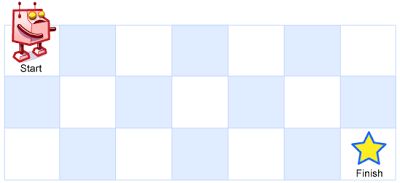LeetCode-in-All
62. Unique Paths
Medium
There is a robot on an m x n grid. The robot is initially located at the top-left corner (i.e., grid[0][0]). The robot tries to move to the bottom-right corner (i.e., grid[m - 1][n - 1]). The robot can only move either down or right at any point in time.
Given the two integers m and n, return the number of possible unique paths that the robot can take to reach the bottom-right corner.
The test cases are generated so that the answer will be less than or equal to 2 * 109.
Example 1:

Input: m = 3, n = 7
Output: 28
Example 2:
Input: m = 3, n = 2
Output: 3
Explanation: From the top-left corner, there are a total of 3 ways to reach the bottom-right corner:
-
Right -> Down -> Down
-
Down -> Down -> Right
-
Down -> Right -> Down
Constraints:
1 <= m, n <= 100
Solution
#include <stdio.h>
#include <stdlib.h>
int uniquePaths(int m, int n) {
// Step 1: Allocate a 2D array for dynamic programming
int** dp = (int**)malloc(m * sizeof(int*));
for (int i = 0; i < m; i++) {
dp[i] = (int*)malloc(n * sizeof(int));
}
// Step 2: Initialize the first column
for (int i = 0; i < m; i++) {
dp[i][0] = 1;
}
// Step 3: Initialize the first row
for (int j = 0; j < n; j++) {
dp[0][j] = 1;
}
// Step 4: Fill the rest of the dp array
for (int i = 1; i < m; i++) {
for (int j = 1; j < n; j++) {
dp[i][j] = dp[i - 1][j] + dp[i][j - 1];
}
}
// Step 5: Store the result
int result = dp[m - 1][n - 1];
// Step 6: Free allocated memory
for (int i = 0; i < m; i++) {
free(dp[i]);
}
free(dp);
return result;
}

